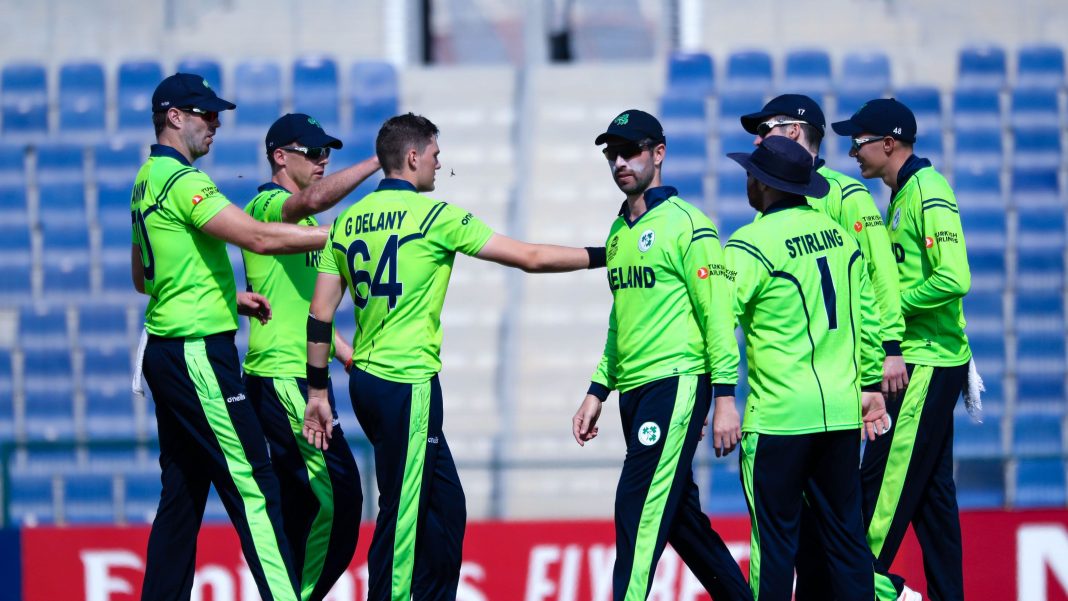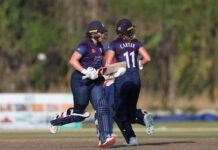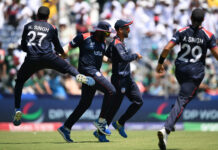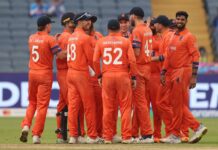Having succeeded in qualifying for the T20I World Cup by finishing top of Group B, Ireland’s next slice of international action saw them jetting out to the Caribbean for ODI and T20I series against the West Indies.
The ODI series saw Andrew Balbirnie captaining Ireland for the first time, as Ireland slipped to a series defeat. While the hosts were comfortable victors in the first and third ODIs, the second saw an Irish triumph slip away at the last minute. Going into the 50th over, the Windies were nine wickets down and needed 5 runs to win. Irish hearts would break, as both the third and fourth balls of Mark Adair’s final over saw fumbled run out opportunities that would have sealed the win, before Sheldon Cottrell finished the match with a six from the penultimate ball.
The T20I series would end more positively for Ireland. A rained off second match (which included a barnstorming 44 from 22 balls from Gareth Delany) and heavy Windies win in the third could not take the shine off an impressive victory for Ireland in the opening T20I. Paul Stirling and Kevin O’Brien continued their prolific run of form with a 154-run partnership, including the (at the time) highest ever powerplay score in a T20I (93/0 after six overs). Ireland would finish on 208/7, as none of the remaining batsmen could go beyond Gareth Delany’s 19.
The Windies chase was truly a rollercoaster, as the momentum switched between the sides again and again, often after each over. After George Dockrell had been smashed for 19 runs in the 13th over, the hosts seemed to be gaining control. A few overs later, in the 17th over, Dockrell would go for just two runs and the required run rate jumped to over 14. Barry McCarthy would then go for 27 in the 18th, to drop the RRR to 8.
Craig Young was tasked with the penultimate over and conceded a mere three runs, leaving the Windies needing 13 in the final over. Josh Little showed signs of the talented death bowler he is becoming, taking two wickets and two dot balls to earn Ireland a famous victory.
Ireland’s next fixture was meant to be a test match against Sri Lanka, but this was postponed. While a disappointment, Ireland still had a busy summer to look forward to, including test matches against Afghanistan, Zimbabwe and Bangladesh and limited overs series against each, as well as New Zealand, Pakistan and England. That was until a certain virus decided to make an appearance.
After a summer of lockdown, there was a small measure of good news, as the England tour was able to go ahead. Ireland arrived into the Southampton bio-bubble ahead of their opening ODI Super League games with an unfamiliar name in their squad. Young South Africa-born Curtis Campher, who had impressed for the Ireland Wolves earlier in the year had been called up and was given his debut in the first ODI. The rest is history, as Campher famously started his international career with a bang, notching half centuries in both his opening two games and continuing to make Tom Banton his bunny.
Ireland would slip to two heavy defeats in the first two games, before Stirling and Balbirnie stunned the (entirely virtual) crowd in the third. After dismissing England for 328, Ireland’s prolific duo set to work with aplomb. Their 214-run partnership would go down as one of the finest chases in Irish history, before Kevin O’Brien and Harry Tector finished the job. The result meant Ireland were able to claim victories over both ODI and T20I World Champions in their respective formats in the same year.
Lockdown would provide a valuable opportunity for some of Ireland’s best players as Stirling, Balbirnie and Gareth Delany were signed up for the Vitality Blast and picked up five 50s between them in a string of impressive innings. Outside of domestic action in the Irish IP20, the rest of the squad would have a long wait before they got more practice in the shortest format.
The final T20I against the West Indies would prove to be Ireland’s last outing in the format for 18 months, as the men in green turned to focus exclusively on ODIs. 50-over Series against Oman, Afghanistan, The Netherlands and South Africa would be played before Ireland took on the Proteas in a T20I series. It was a poor run of games for Ireland, with the notable exception of a fantastic win over South Africa in the second ODI.
The same problems would continue as Ireland welcomed Zimbabwe for five T20Is and three ODI matches, as they alternated between top class displays leading to crushing wins and frustrating losses where the team crumbled with a whimper. Ireland’s performance in the World Cup will likely be very dependent on which version of the side shows up for each game.
There were a string of strong individual performances over the past two years that will give Ireland fans hope. Paul Stirling has found a purple patch at the right time, at one point hitting four ODI 100s in the space of six games, finally reaching his first T20I ton against Zimbabwe and claiming the player of the match award in the Hundred final for the Southern Brave.
With the ball, Josh Little and Mark Adair have started to form a fearsome team bowling at the death, bringing a wide range of variations to the Irish attack; the pair combining to take 40 international wickets so far in 2021.
Either one deserves a good World Cup resulting in breaking onto the franchise circuit, and they will not be the only players in a young squad desperate to impress.
You’re reading Emerging Cricket — brought to you by a passionate group of volunteers with a vision for cricket to be a truly global sport, and a mission to inspire passion to grow the game.
Be sure to check out our homepage for all the latest news, please subscribe for regular updates, and follow EC on Twitter, Facebook, LinkedIn and YouTube.
Don’t know where to start? Check out our features list, country profiles, and subscribe to our podcast.
Support us from US$2 a month — and get exclusive benefits, by becoming an EC Patron.







